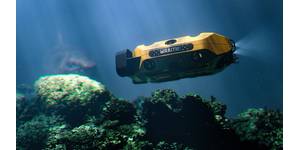U.S.-to-Brazil submarine cable to be laid
In an importand development for Brazilian high-speed communications with the United States, U.S. based Seaborn Networks service provider is primed to lay a new system of submarine cummunications cable that will provide a direct route between the Unites States and Brazil.
Set to go active in 2014, the new Seabras-1 submarine cable will offer 32 Tbps of capacity connecting Miami and Sao Paulo, with a branch that lands in Fortaleza, Brazil. The service provider's timing couldn't be better as the Brazilian government prepares to adopt a National Broadband Plan and the country is also preparing to host upcoming 2014 Soccer World Cup and 2016 Olympic Games, which will drive greater growth of voice, video and data services throughout Brazil. The major increase of U.S. oil and gas companies opening offices in Brazil due to the massive exploration of the deep water pre-salt O&G frontier off the Brazilian coast are also set to benefit from this high speed u/w cable.
A Frost & Sullivan report forecast that growth in Brazil's telecom investments will total $35 billion from 2011 through 2016. Over the past three years, Seaborn and a number of traditional telecommunication providers, including BT, Level 3 and Orange Business Services, have made continual investments in Latin America. While Seaborn is new, its founders--including CEO Larry Schwartz--have plenty of experience building out large submarine cable networks. Before the creation of Seaborn Networks, Schwartz led Bridgehouse Marine, an installer of submarine fiber optic cables systems for the telecommunications industry.
This experience will come in handy as the provider begins building out its network and targeting potential wholesale customers in both Brazil and the United States. The recent meeting between the Brazilian and U.S. presidents and the possibility of easier transit through immigration for citizens of both countries is also expected to drastically increase commerce between the two countries, if this really goes through, the new high speed comms will be very handy indeed in order to speed up contact between business men in both countries.
There has not been much talk about eventual environmental impacts caused to the seabed by the u/w cable system but it will definitely be something to look at as there are many sensitive areas along the Brazilian coast that need to be protected. Obviously the fingerprint left by a telecomm cable is negligible as compared to O&G pipelines, but it still is something that needs to be looked at in order to protect the u/w environment as much as possible.
Claudio Paschoa









 August 2025
August 2025



